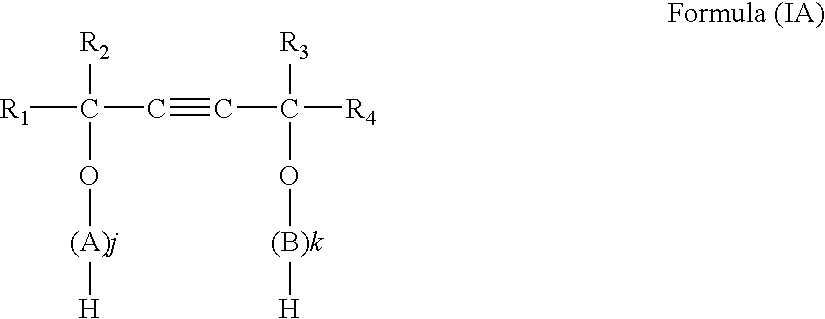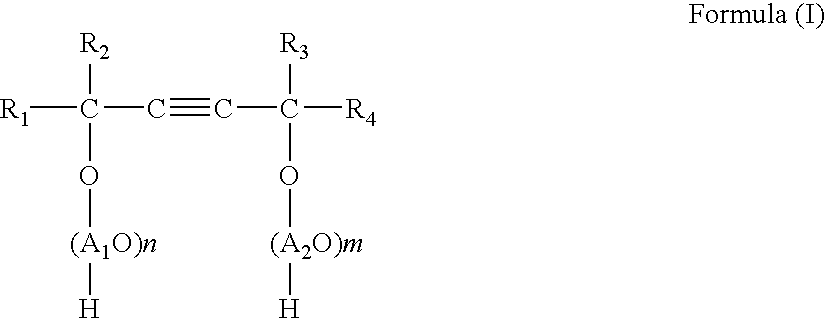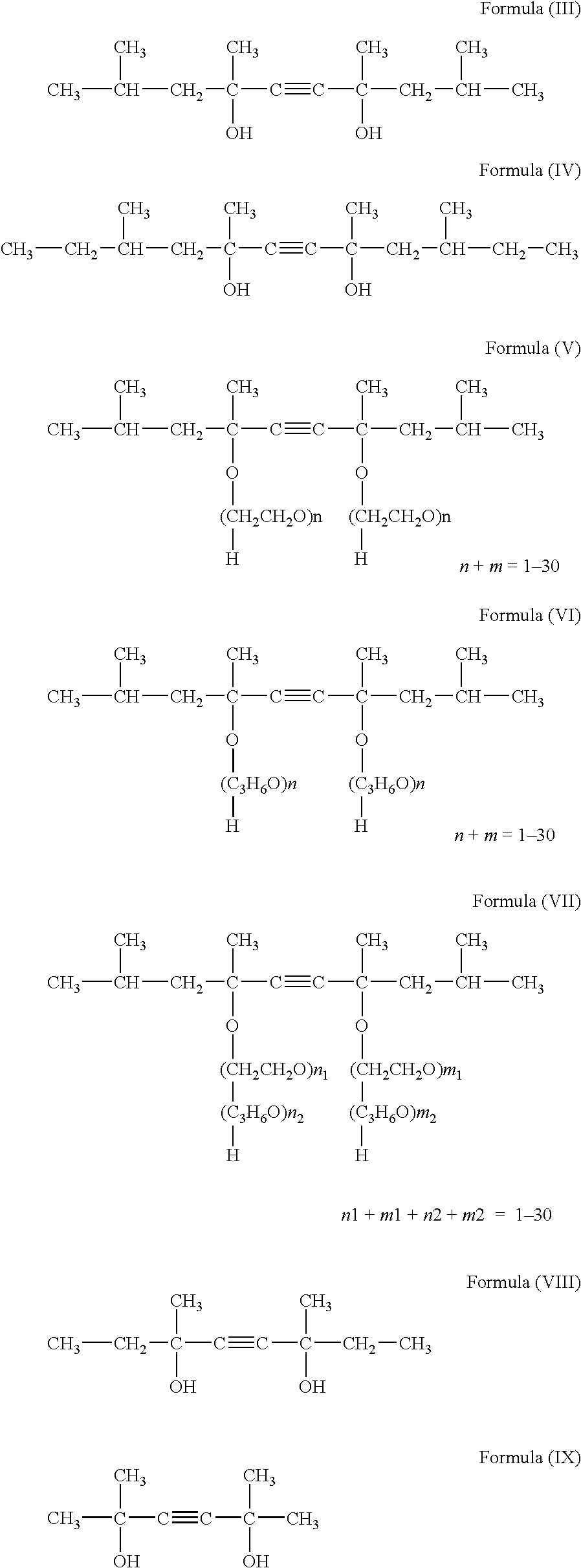Inkjet ink
a technology of inkjet printing and inkjet paper, which is applied in the direction of inks, instruments, measurement apparatus components, etc., can solve the problems of insufficient ink permeability of paper, inability to quickly overlaid in continuous printing, and easy fiber bleeding,
- Summary
- Abstract
- Description
- Claims
- Application Information
AI Technical Summary
Benefits of technology
Problems solved by technology
Method used
Image
Examples
example a
[0098]Specific examples and the like of the present invention will now be described, but the present invention is not limited by the examples or the like that follow.
[0099]The water-soluble coloring materials used in the present invention will be described with reference to the use of dyes, pigments, or both dyes and pigments.
[0100](Production of Surface-Treated Pigment)
[0101]Water-soluble pigment 1 was manufactured in the following manner by a process in which carbon black was oxidized with hypochlorous acid to attach carboxylic groups to the surface of the carbon black. Monarch 880 (manufactured by Cabot), a carbon black, was wetted with water, an aqueous solution of sodium hypochlorite was added, the system was heated to 100° C., and a treatment was performed for 24 hours. The product was then repeatedly washed and centrifuged to remove the hypochlorite, chlorine, and coarse particles. The surface-treated pigment may also be acquired as a commercially available product if it is b...
example a1
[0112]
Amount added (wt %)Water-soluble pigment 1 (105) 5.0Formula (IA) substance (1) 1.0Formula (IIA) substance (1) 0.3Emulsion A 3.0DEGmBE 7.0Glycerol20.01,5-Pentanediol 2.0Triethanolamine 0.8WaterBalance
[0113]In the formula (IA) substance (1), R1 and R2 are methyl groups; R3 and R4 are isobutyl groups; and A and B are propylene oxide and ethylene oxide, wherein the propylene oxide groups have 4 units as an average value, and the average value of the ethylene oxide groups is 6 units. The total of j and k is 10 as an average value. Emalex DAPE-0207 from Nihon Emulsion was used as the formula (IIA) substance (1).
example a2
[0114]
Water-soluble pigment 2 (85) 3.0Formula (IA) substance (2) 1.2Formula (IIA) substance (2) 1.0Emulsion A 1.0DEGmBE10.0Glycerol 9.0Dipropylene glycol 5.0Triethanolamine 1.0Potassium hydroxide 0.1WaterBalance
[0115]In the formula (IA) substance (2), R1 and R2 are methyl groups; R3 and R4 are isobutyl groups; and A and B are both zero. Emalex DAPE-02012 from Nihon Emulsion was used as the formula (IIA) substance (2).
PUM
| Property | Measurement | Unit |
|---|---|---|
| carbon number | aaaaa | aaaaa |
| carbon number | aaaaa | aaaaa |
| wt % | aaaaa | aaaaa |
Abstract
Description
Claims
Application Information
 Login to View More
Login to View More - R&D
- Intellectual Property
- Life Sciences
- Materials
- Tech Scout
- Unparalleled Data Quality
- Higher Quality Content
- 60% Fewer Hallucinations
Browse by: Latest US Patents, China's latest patents, Technical Efficacy Thesaurus, Application Domain, Technology Topic, Popular Technical Reports.
© 2025 PatSnap. All rights reserved.Legal|Privacy policy|Modern Slavery Act Transparency Statement|Sitemap|About US| Contact US: help@patsnap.com



